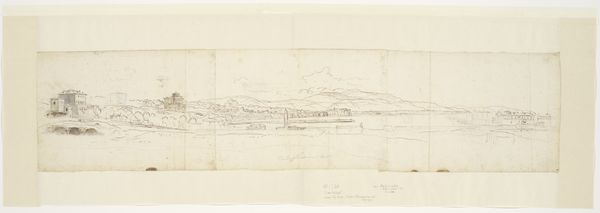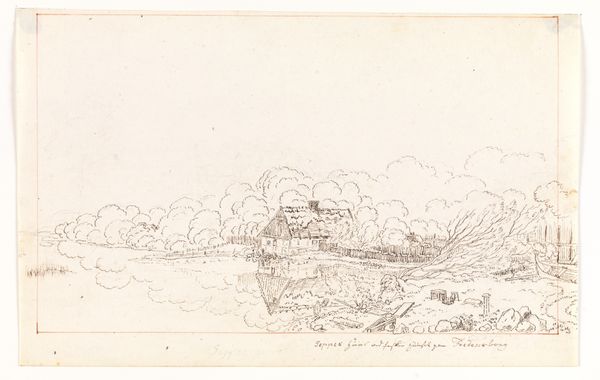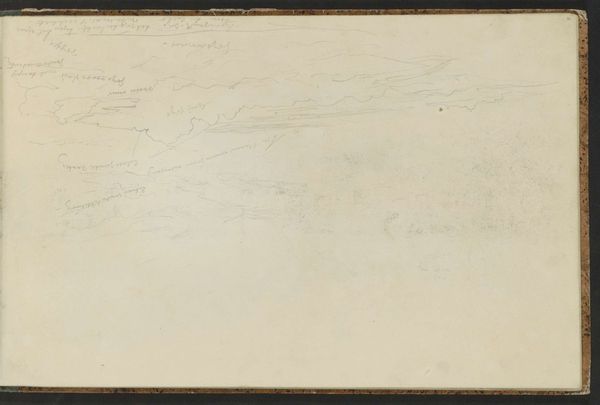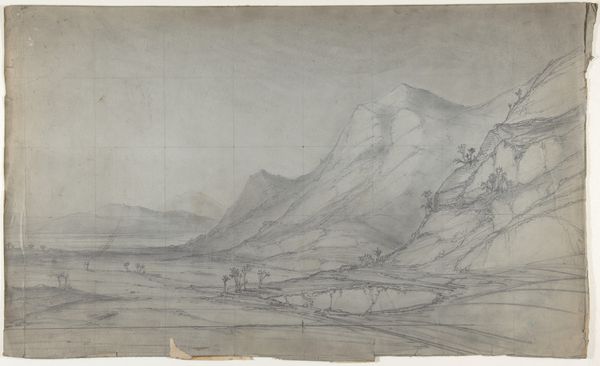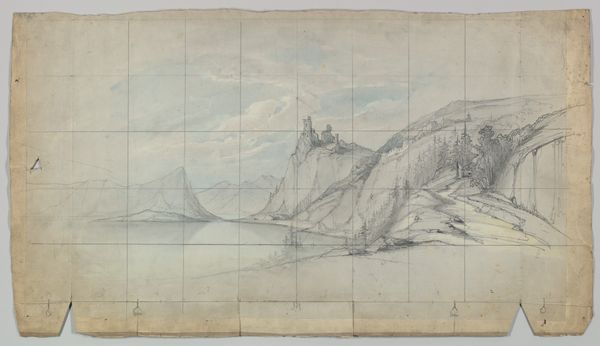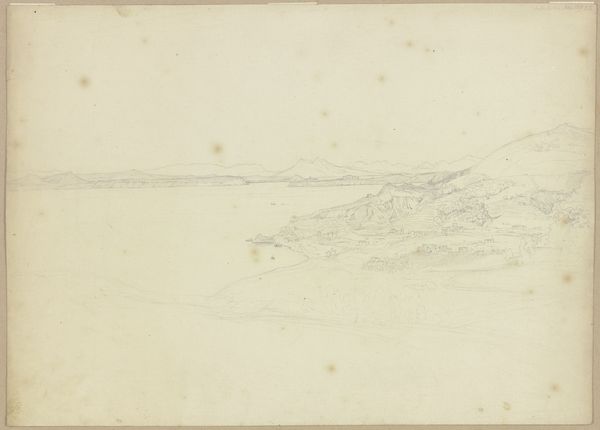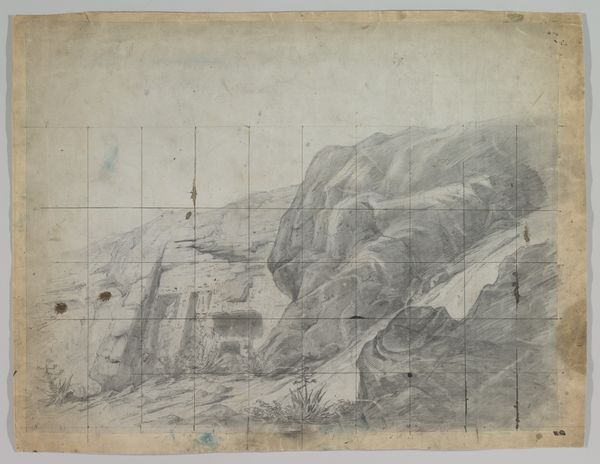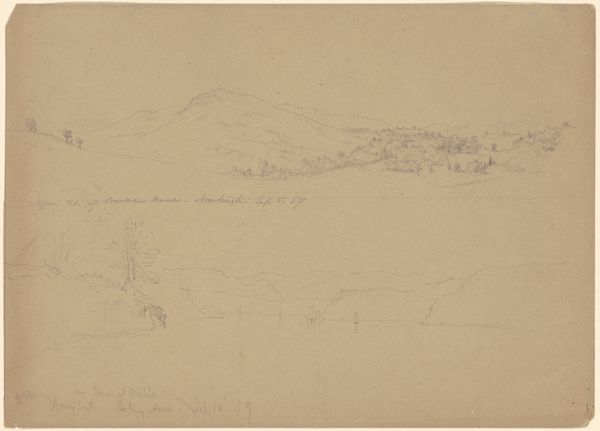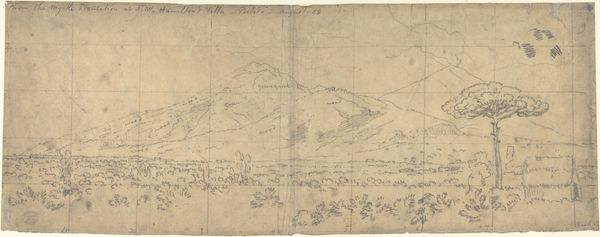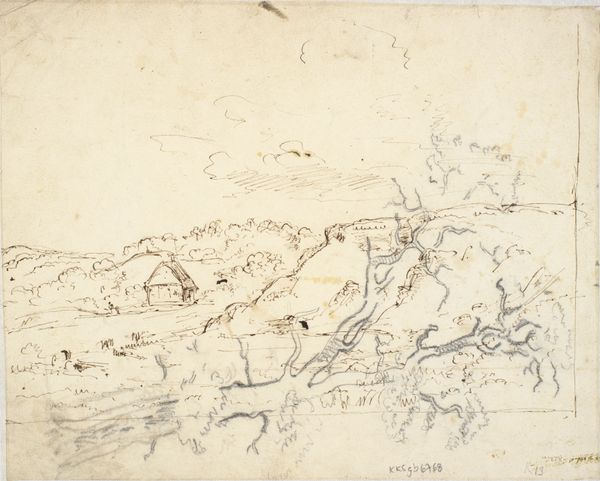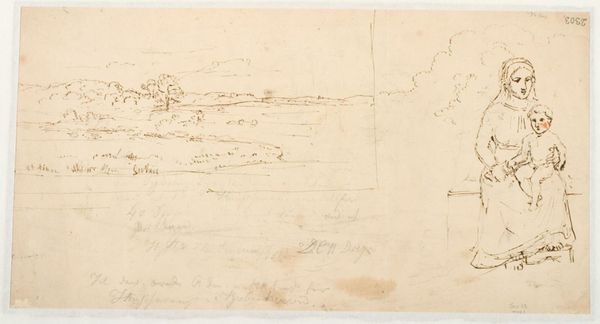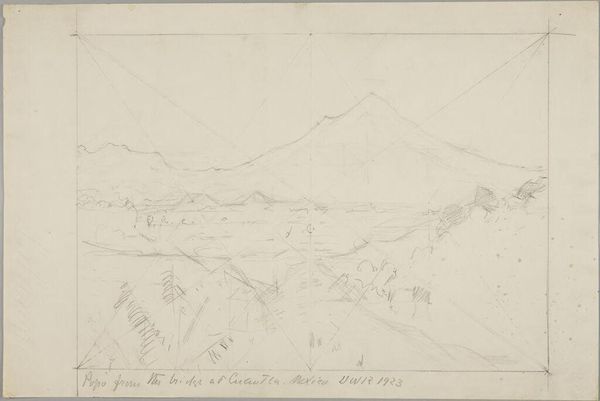
drawing, ink
#
drawing
#
landscape
#
ink
#
orientalism
#
history-painting
Dimensions: height 234 mm, width 456 mm
Copyright: Rijks Museum: Open Domain
Editor: Here we have Jan Brandes’s ink drawing from 1787, "Gezicht op Kaap de Goede Hoop vanuit de Tafelbaai" – or "View of Cape Town from Table Bay." It strikes me as both serene and subtly unsettling. It’s this very ordered, almost clinical depiction of the landscape, but it speaks to a fraught colonial history. What are your initial thoughts looking at this, from your perspective? Curator: Indeed, it’s a fascinating image to dissect. What’s immediately compelling is considering Brandes' role as an employee of the Dutch East India Company. This isn't just a landscape; it's a representation laden with colonial ambition. The detail afforded to the geography suggests strategic interest. Notice how the ships are almost ghost-like, hinting at the ever-present maritime power dynamic, and how the landscape itself seems claimed and neatly organized in the rendering. How does that interplay of control and observation strike you? Editor: I hadn’t quite framed it that way, but that rings true. It feels like Brandes is asserting a specific, controlled view of the Cape, in service of the VOC's aims. This makes me question the absence of any Indigenous figures. Does their omission represent a form of erasure, reinforcing colonial power dynamics? Curator: Absolutely. The absence speaks volumes. We might think about how this imagery functions in the broader context of orientalism and colonialism: projecting an image of a landscape ready for exploitation and "civilization." Also consider where this drawing might have been displayed. What impact would this image have had on a European audience unfamiliar with the area? Editor: That's powerful. By focusing on the Dutch perspective and its purpose, it seems the image is not about a picturesque view, but a statement of ownership. I’m starting to grasp the social implications embedded within. Curator: Precisely. Art offers itself as a lens through which we see our history, with all its complexities and inherent politics of seeing and claiming. It also reveals the power dynamics inherent in representation. Editor: Understanding the cultural context transforms the piece, it offers so much. Thanks, that's a really insightful lens.
Comments
No comments
Be the first to comment and join the conversation on the ultimate creative platform.
